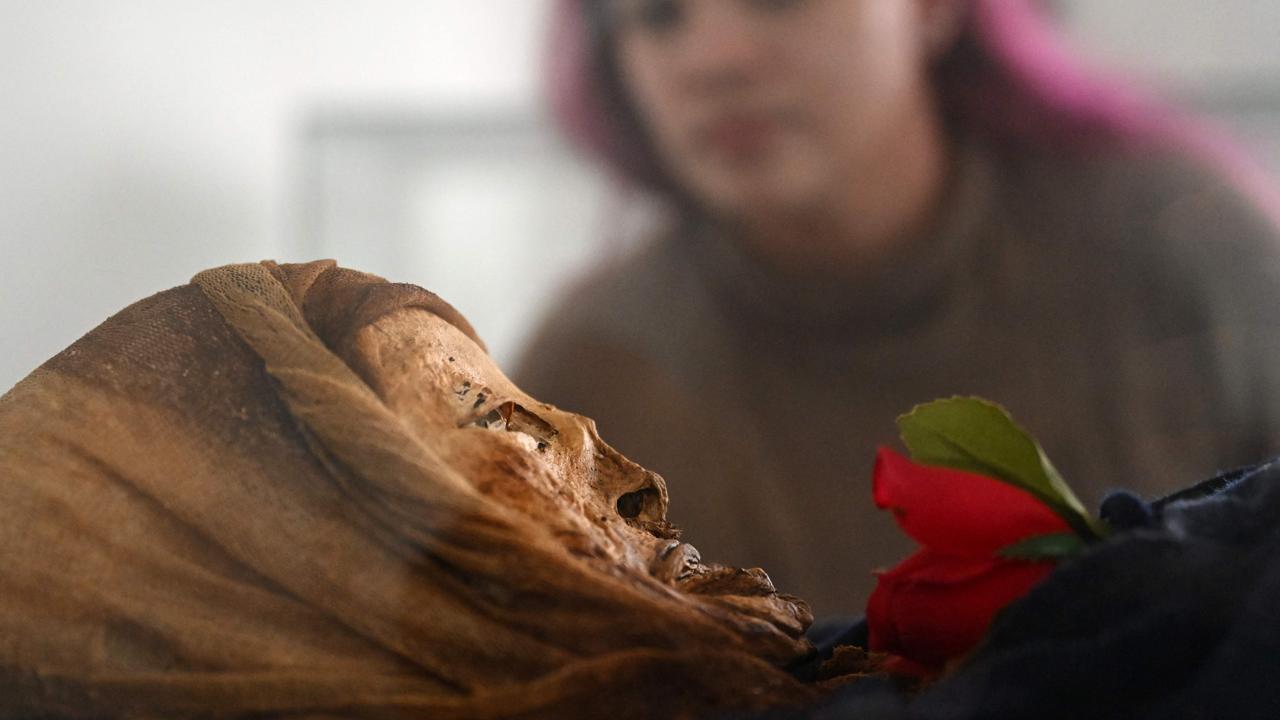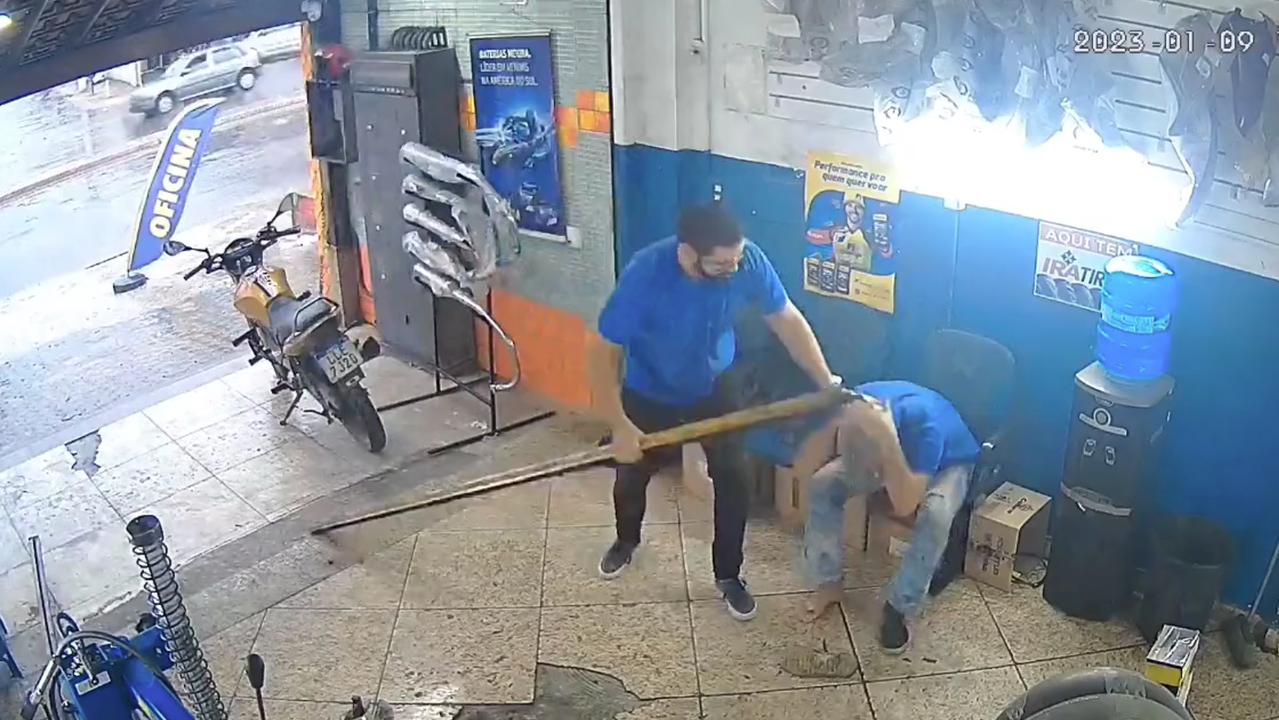How ayahuasca is drawing western travellers to the Amazon
THERE’S a strange brew luring travellers deep into the Amazon jungle. And in these far-flung areas, it’s sparking a surprising tourism boom.
FIRST there was vomiting. Then came the visions.
At some point all sense of time was lost, and it felt like the body had been left far behind as the mind — or perhaps was it the spirit — explored another dimension. That could be the best way to describe it, but maybe not: after all, little compared to the experience of an Amazonian ayahuasca ceremony. “It is a very difficult experience to describe as the visions you see have no reference in human terms,” Sydney woman Sophie (not her real name) told news.com.au of her recent experience with ayahuasca, an ancient hallucinogenic plant blend. “There are no words in the English language to explain what you see and where you go.” But a growing number of Westerners are heading to the Amazon to find out for themselves, as ayahuasca — a potent concoction administered by a traditional shaman — inspires a strange new travel trend. And in little-known areas of countries such as Peru, Ecuador, Brazil, Bolivia and Colombia, it’s sparked a unique tourism industry. WHAT IS AYAHUASCA? Described as anything from wonderfully life-changing to the devil itself, ayahuasca is a hallucinogen derived from a blend of Amazonian vines and shrubs that are brewed into a drinkable potion. It’s illegal in Australia but not in countries such as Peru and Ecuador, where ayahuasca retreats are popping up to cater for Western tourists seeking alternative healing, a universe-opening awakening, or both. For centuries ayahuasca has been an integral part of local indigenous cultures throughout the Amazon region, where it has been used in medicinal and spiritual rituals. But recently, interest in ayahuasca has crept into the mainstream. Celebrities have started talking publicly about using it and this year, TV host Chelsea Handler experienced it on-camera in her Netflix series Chelsea Does. Ayahuasca expert Robin Rodd from James Cook University said interest in the hallucinogen had “exploded” over the past decade. “I think ayahuasca’s interesting because it attracts so many different people who come at it from different directions,” Dr Rodd told news.com.au. “There’s a group of people who may have tried psychedelic drugs in the past and for them it’s a novel experience and another way of having some kind of divine encounter. “There are people who have heard it’s something that could have healing properties and they’re interested in the aspect of psychological healing or gaining resolution of personal issues. “There’s a large number of people who may be into new-age spiritual practices and ... they have an association with it as both a sense of enlightenment and a way to experience the sacred.” Medical studies of the substance is also on the rise, especially in Brazil but also through Europe, where scientists are exploring the potential of ayahuasca in treating addiction as well as Alzheimer’s disease, depression and eating disorders. Dr Rodd said the response to ayahuasca varied wildly — while many testified to a profoundly positive experience, there have been injuries, accidental deaths and sexual assaults involving intoxicated people. But for Sophie, it was a positively life-changing event. GOING ON A TRIP FOR A TRIP Sophie, who said she was not a regular recreational drug user, was on a six-month backpacking trip through South America with her boyfriend when they decided to experience ayahuasca. The pair made their way to the Ecuadorean city of Tena in the Amazon jungle specifically to try it. She said it was the experiences of fellow travellers that prompted her to try it. ���Even people who were not spiritual in any way at all reported a spiritual experience and felt as if they had let go of emotional baggage,” Sophie said. “As a psychology student it definitely piqued my interest. I heard stories from people with drug addictions and one ayahuasca ceremony was enough to make them realise they will never do drugs again. I met people with severe childhood trauma who felt ayahuasca helped them to acknowledge and move on from the trauma. I met people who coped with the loss of their grandparents, the loss of a relationship, and being unsure about what their purpose in life was, all in one ceremony.” At the ceremony, participants — who are asked to quit alcohol, meat, salt, sugar and processed foods for two weeks to cleanse the body in preparation — gather and wait as the plants are prepared into the brew they will drink under the guidance of a shaman. “There were four of us in the ceremony, my boyfriend and me and another couple,” Sophie said. “We were in the middle of the jungle in a small hut, we each had our own mattress and bucket for vomiting.” Sophie said it took about two hours until the ayahuasca kicked in for her. “During that time I was just listening to the shaman sing a beautiful song and cleanse the room to keep negative energies out,” she said. “Once the medicine did start to work through my body I did start to vomit ... but this vomiting actually felt kind of good. It felt like I was releasing a lot of negative energy or baggage that I do not need to carry around. “After this I experienced visions. I felt that I completely left my body and was being taken on a tour of another realm. The entire time I felt really nurtured and cared for and could sense that the shaman was there with me the entire time. You lose all sense of time but I naturally drifted off to sleep after the medicine wore off. I think it lasted about six hours.” Sophie said during the time she was experiencing ayahuasca, she became aware of issues of self-confidence and self-doubt, and felt them trickling away. She said the ceremony left her changed. “I went into the experience a devout atheist. Now I am very open minded to the fact that something may exist beyond what we consciously see, the same way that we know infra-red and UV light exists even though we physically can’t see it,” she said. Sophie said her participation in the ceremony cost $120, including accommodation and breakfast. A BURGEONING INDUSTRY Each year, tens of thousands of ayahuasca tourists trek into the Amazon for their own experience with the ancient concoction. The epicentre of ayahuasca is the Peruvian city of Iquitos, where there are up to 100 centres that offer it, according to The Guardian. Most are willing to help pilgrims who are genuinely curious, seeking meaning, or hoping to be healed in some way — but not all. Omar Gomez, the Rainforest Healing Centre, told The Guardian he turned away 60 per cent of visitors. “We do an intense screening process to make sure we don’t have any psychedelic tourists,” he said. “Right now the ayahuasca industry is booming. But we want to make sure that the people who come are people that have a strong intention and desire to heal.” Dr Rodd, who spent time living with a Piaroa tribe in Venezuela to study local shamanism, said a kind of ayahuasca tourism has been expanding quite a bit over the past 15 years. “I guess in Peru, which is a real hotspot for it, people can quite easily walk the Inca trail by day and then afterwards drink some ayahuasca and it’s a real global travel experience,” he told news.com.au. “On one level it’s created a while lot of employment opportunities as there’s been a boom in shaman tourism that has benefited a lot of local people. “But it’s also certainly transformed what shamanism is, because now it’s about servicing tourists and meeting their requirements, although there is still a demand from locals.” Intense interest in ayahuasca ceremonies has also spawned so-called “fake shamans” who make money offering dodgy, and possibly dangerous, variations of ayahuasca to unwitting tourists. The Department of Foreign Affairs and Trade recommends caution when drinking ayahuasca in countries such as Peru and Ecuador. “While this is not illegal, there is no way to thoroughly vet Ayahuasca tour operators, and if you choose to participate, please be aware of the potential security and health risks involved,” DFAT said. “Some participants have been seriously assaulted and robbed. Victims report a range of experiences, from being alert but unable to maintain control of their surroundings, to total amnesia.” There have been some suggestions that Western interest in ancient ayahuasca ceremonies was a kind of cultural appropriation. Dr Rodd suggested some local indigenous groups were benefiting from the ayahuasca boom more than others: “Because they correspond with what the global market thinks is ‘authentic’ and they’re probably orienting towards that,” he said. But Sophie, who first experienced the substance earlier this year, plans to soon return to South America to do it all again. “Almost five months later I feel completely comfortable in my own skin where I never was before,” she said. “I feel a sense of ease in my life and I still feel really nurtured and cared for by a higher power I cannot explain. “I am already planning on going back and doing two weeks of ceremonies with my shaman.”




